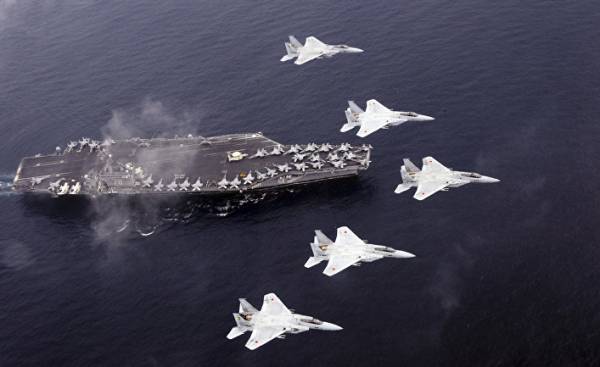
In 2018, the Ministry of defense of Japan intends to increase defence spending to more than five trillion yen. The Ministry is requesting a budget for four years in a row. The amount will be increased compared to 2017, so it is assumed it will be the largest in history. This comes against the backdrop of nuclear and missile development of the DPRK and the Chinese threat in the area of remote Islands.
In addition, it intends to proceed with the development of radar the next generation in order to respond to the latest stealth aircraft, which China and Russia are treated with great enthusiasm.
All items must be settled by the end of August. In 2017, the Ministry has requested
5,168 trillion yen, including the costs of the reorganization of U.S. troops. In the end, the self-defense forces was allocated 5,125 trillion yen. Defense spending continues to grow after Prime Minister Abe was re-elected for a second term in 2013. The request of the Ministry exceeded five trillion yen in 2015. The actual budget has exceeded this amount in 2016.
Regarding the budget for the year 2018, the primary task of the countermeasures against the DPRK. In the heart of the budget lies with the States the establishment of a system of destruction of ballistic missiles. The Ministry of defense will intensify research in order to implement a ground-based version of missile defense, “aegis Ashore”. In this regard, research expenditures will increase in comparison with the budget in 2017.
In order to equip the ships of the “aegis” of new missiles with increased range, will also require additional costs.
Reaction to the intensification of marine China also requires additional costs. Chinese ships and fighter jets have intensified in the East China sea. In 2016, the number of flights on alert aircraft self-defense forces has grown in 1,5 times. In may this year, Chinese patrol ship violated territorial waters of Japan and launched the drone.
In this connection there was a necessity to prevent attacks on remote Islands and have the ability to bring them under their control. The Ministry of defence plans no later than March of next year to form a rapid response team to carry out operations on remote Islands. Also in the future year on armaments, it is planned to put the convertiplanes Bell V-22 Osprey to deliver units to the Islands. It will also require the implementation costs of missiles air-to-ground attacks on ground targets.
As for the main striking force of the Navy, patrol ships, will be accepted into service two new vessels with the function of search and neutralization minutes. Because they are smaller than conventional ships, costs will be reduced by 30%. The load on the patrol ships have increased: the situation in the East China sea, ballistic missiles, North Korea, Somali pirates and so on.
China and Russia are actively developing stealth aircraft, therefore the Ministry of defence began the development of radar the next generation, which improved the function of collecting electronic information. It is planned to create the radar is not stationary, but movable type so that they could flexibly react to any threats. Development will start next year and will last five years. Adopted a new system needs to be delivered in ten years.
To prevent cyber-attacks, you will need to increase the number of appropriate experts to protect systems-defense forces.
Defense spending will be formed in accordance with the five-year plan. Current five-year term comes to an end in 2018. In view of the increased North Korean threat, some members of LDPE proposed to begin forming the future the five-year plan already, but the government decided to act according to plan, which means that the new five-year plan will begin in 2019.
Japanese defense spending has always been within 1% of GDP. Due to changes in the field of security, some suggest that they went beyond 1%, but according to the Ministry of defence currently has no plans to make major adjustments to the existing system.







